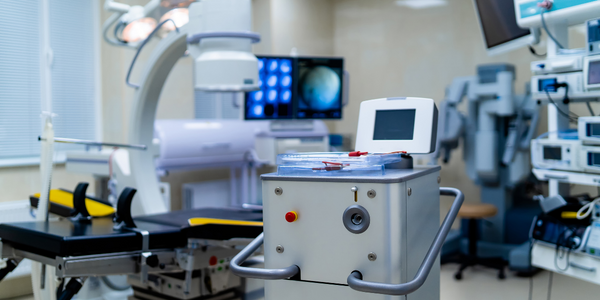
技术
- 功能应用 - 制造执行系统 (MES)
- 平台即服务 (PaaS) - 设备管理平台
适用行业
- 电子产品
- 医疗保健和医院
适用功能
- 设施管理
- 质量保证
用例
- 添加剂制造
- 自动化制造系统
服务
- 系统集成
- 测试与认证
客户
医疗器械公司
关于客户
这家医疗器械制造商的新建工厂不仅采用数字 DHR 系统实现 100% 无纸化,而且他们的系统是实时的。该团队可以在几分钟内完成材料、人员和设备的可追溯性查询,而不是几天或几周。
挑战
一家医疗设备制造商需要在新的未开发组装设施中完成新型医疗设备的新产品介绍 (NPI)。
该团队需要将产量从工程师每月建造的几台增加到一线工人每月的数百台。工程团队需要让一线工人能够组装单元并通过 eDHR 记录他们在每一步的活动,以达到合规目的。
在考虑这些挑战的同时,工程团队决定使用纸质 SOP 和历史记录对于新团队的入职来说不是可行或有效的解决方案。
解决方案
实施基于云的制造和文档系统
这家医疗设备制造商没有从 SOP 的纸质流程和 eDHR 的传统 MES 开始,而是决定通过在新的新建工厂投资制造 4.0 技术来实现无纸化。
他们使用 Tulip 的前线操作平台实施了一个经过验证的解决方案,以通过交互式应用程序支持所有装配操作。借助该平台,他们构建了 90 多个应用程序来逐步指导和跟踪构建过程。他们还包括测试和修复工作流程,作为分步应用程序的一部分,以捕获数字历史记录 (eDHR)。
通过数字工作指令和过程控制跟踪,工程团队现在可以连续收集制造生产绩效数据。
运营影响
数量效益

Case Study missing?
Start adding your own!
Register with your work email and create a new case study profile for your business.
相关案例.

Case Study
Remote Temperature Monitoring of Perishable Goods Saves Money
RMONI was facing temperature monitoring challenges in a cold chain business. A cold chain must be established and maintained to ensure goods have been properly refrigerated during every step of the process, making temperature monitoring a critical business function. Manual registration practice can be very costly, labor intensive and prone to mistakes.

Case Study
Hospital Inventory Management
The hospital supply chain team is responsible for ensuring that the right medical supplies are readily available to clinicians when and where needed, and to do so in the most efficient manner possible. However, many of the systems and processes in use at the cancer center for supply chain management were not best suited to support these goals. Barcoding technology, a commonly used method for inventory management of medical supplies, is labor intensive, time consuming, does not provide real-time visibility into inventory levels and can be prone to error. Consequently, the lack of accurate and real-time visibility into inventory levels across multiple supply rooms in multiple hospital facilities creates additional inefficiency in the system causing over-ordering, hoarding, and wasted supplies. Other sources of waste and cost were also identified as candidates for improvement. Existing systems and processes did not provide adequate security for high-cost inventory within the hospital, which was another driver of cost. A lack of visibility into expiration dates for supplies resulted in supplies being wasted due to past expiry dates. Storage of supplies was also a key consideration given the location of the cancer center’s facilities in a dense urban setting, where space is always at a premium. In order to address the challenges outlined above, the hospital sought a solution that would provide real-time inventory information with high levels of accuracy, reduce the level of manual effort required and enable data driven decision making to ensure that the right supplies were readily available to clinicians in the right location at the right time.

Case Study
Gas Pipeline Monitoring System for Hospitals
This system integrator focuses on providing centralized gas pipeline monitoring systems for hospitals. The service they provide makes it possible for hospitals to reduce both maintenance and labor costs. Since hospitals may not have an existing network suitable for this type of system, GPRS communication provides an easy and ready-to-use solution for remote, distributed monitoring systems System Requirements - GPRS communication - Seamless connection with SCADA software - Simple, front-end control capability - Expandable I/O channels - Combine AI, DI, and DO channels

Case Study
Driving Digital Transformations for Vitro Diagnostic Medical Devices
Diagnostic devices play a vital role in helping to improve healthcare delivery. In fact, an estimated 60 percent of the world’s medical decisions are made with support from in vitrodiagnostics (IVD) solutions, such as those provided by Roche Diagnostics, an industry leader. As the demand for medical diagnostic services grows rapidly in hospitals and clinics across China, so does the market for IVD solutions. In addition, the typically high cost of these diagnostic devices means that comprehensive post-sales services are needed. Wanteed to improve three portions of thr IVD:1. Remotely monitor and manage IVD devices as fixed assets.2. Optimizing device availability with predictive maintenance.3. Recommending the best IVD solution for a customer’s needs.





